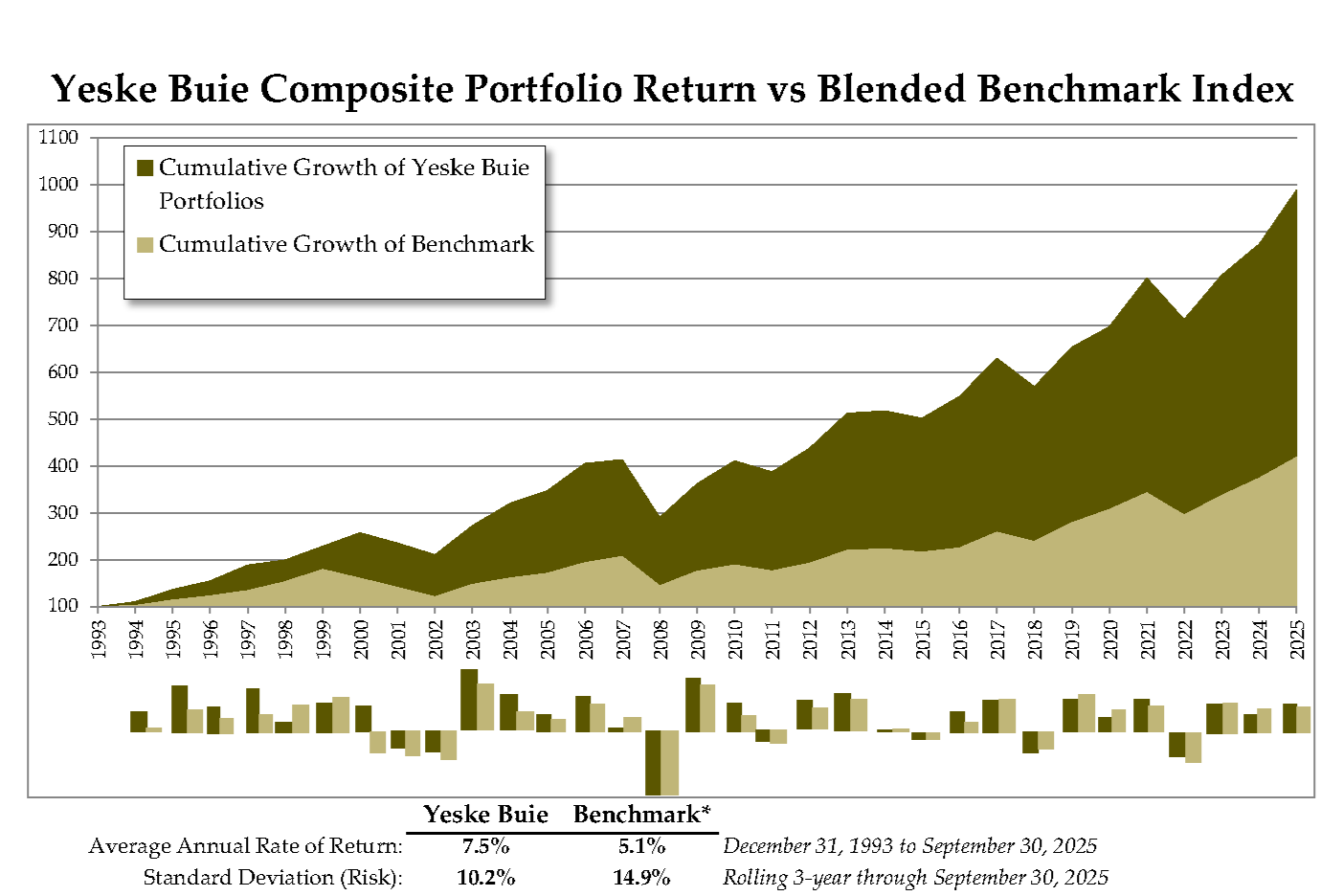Finding the Right Benchmark for a Globally Diversified Portfolio

Clients often ask us what benchmark they should be comparing against their portfolio’s performance to see where they stand. As you’ve probably read in this space before, Yeske Buie employs a diversification strategy that is multi-layered (see this recording for more details about how we build an “all-weather” portfolio). This post will focus on the benchmark we use for the stock portion of our portfolios; we compare the performance of the bond mutual funds we use against the Citigroup World Government Bond Index.
First, the following is a summary of how we diversify our Clients’ investments across several dimensions:
- Globally: Our portfolios do not exhibit “home-country bias”; the stock portion is split amongst domestic and international investments in the same proportion as the world market capitalization.
- Investment Types: We spread our Clients’ assets among various types of investments including small and large company stocks, value and growth stocks, bonds, real estate securities, and both developing and emerging markets’ stocks.
- Within Categories of Investments: To capitalize on the risk taken by investing in the aforementioned categories, we use mutual funds to ensure our Clients’ investments are broadly diversified. To do that, one needs to own lots of stocks in each of those categories; mutual funds allow us to gain exposure to 10,000 stocks at once.
- Across Currencies: Our portfolios are not hedged against exchange-rate risk. This means that our Clients’ international investments are denominated in those countries’ respective currencies, ensuring that our portfolios are not “prisoners” of a single currency’s strength.
The Morgan Stanley Capital International All Country World Index (or MSCI ACWI) is the benchmark we use to compare the performance of the stock portion of our Clients’ portfolios to that of the global market. We use this index because it provides an accurate measure of global stock performance, and because it is geographically neutral in that it is allocated to different countries based on their relative share of the global stock market – just like our portfolios.
So what differentiates our portfolios’ performance from that of the index? Our investment philosophy dials up exposure to two segments of the market – small company stocks and value stocks – such that their representative weights in our portfolios are greater than their actual weights in the global market (ex. small company stocks make up about 11% of the global market; they make up 43% of Yeske Buie’s stock portfolios).
The benefit of the increased exposure to those relatively riskier segments is best illustrated by the graphs below:
The graph shows the performance of our portfolios relative to the benchmark from December 31st, 1993 to September 30th, 2025 (the bars below each year illustrate the annual performance). Our portfolios averaged annual returns of 7% (relative to the benchmark’s performance of 4%) with less than half the risk (measured by standard deviation).
While a portion of the spread between the growth of our portfolios vs. the growth of the benchmark can be attributed to the disciplined approach we take to rebalancing (we are constantly looking for opportunities to buy low and sell high), much of the performance of our portfolios is explained by the diversification of the underlying assets and the over-weighting of small company and value stocks relative to the global market.

